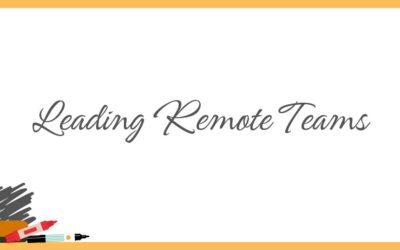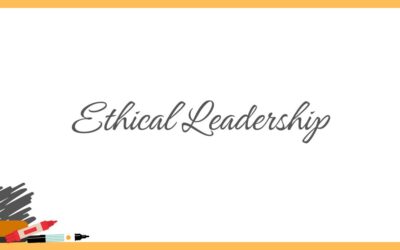In today’s fast-paced and dynamic world, leaders must recognize the significance of continuous learning and personal development. This lesson delves into the benefits of lifelong learning for leaders, the impact it has on organizational success, and strategies for creating a culture of learning within the workplace. By committing to their own growth and inspiring others to do the same, leaders can drive innovation, adaptability, and sustainable success.
Embrace Lifelong Learning:
- Commit to personal growth: Recognize that learning is a lifelong journey and commit to continuously developing your skills, knowledge, and competencies as a leader.
- Seek diverse learning opportunities: Actively seek out a variety of learning experiences, such as workshops, seminars, conferences, online courses, industry events, and reading materials, to broaden your perspectives and acquire new insights.
- Reflect on learning: Regularly reflect on your learning experiences, extracting key lessons and identifying areas for improvement. Apply newfound knowledge and skills to your leadership practices.
Stay Relevant and Adaptable:
- Stay informed about industry trends: Stay abreast of industry advancements, technological innovations, and emerging trends that could impact your organization. Engage in industry networks, join professional associations, and leverage industry-specific resources to stay informed.
- Embrace change and innovation: Foster a mindset that embraces change and encourages experimentation and innovation. Be open to new ideas, challenge the status quo, and encourage creative problem-solving within your team and organization.
- Develop agility: Cultivate agility by being adaptable, flexible, and responsive to evolving circumstances. Embrace new technologies and approaches that can enhance efficiency and effectiveness in your leadership role.
Inspire a Culture of Learning:
- Lead by example: Demonstrate your commitment to continuous learning by openly sharing your own learning journey, discussing the value of learning, and incorporating new knowledge and skills into your leadership practices.
- Encourage professional development: Support and encourage your team members’ professional development by providing opportunities for training, mentorship, coaching, and skill-building activities.
- Foster a learning environment: Create a safe and supportive environment where employees feel empowered to ask questions, share ideas, and take risks. Encourage knowledge sharing, collaboration, and a growth mindset throughout the organization.
Benefits:
- Personal Growth and Relevance: Continuous learning enables leaders to expand their knowledge, develop new skills, and stay relevant in a rapidly evolving world, enhancing their effectiveness and adaptability.
- Innovation and Adaptability: Embracing lifelong learning fosters a culture of innovation, where leaders and teams are open to new ideas, embrace change, and adapt to evolving circumstances.
- Employee Engagement and Development: A culture of learning inspires employee engagement and satisfaction, as individuals have opportunities to develop their skills, explore their potential, and contribute to the organization’s success.
- Organizational Resilience: A learning culture promotes organizational resilience by equipping leaders and employees with the knowledge and skills needed to navigate challenges, embrace change, and seize new opportunities.
Strategic Ways to Foster Continuous Learning:
- Allocate dedicated learning time: Set aside dedicated time for learning and encourage your team members to do the same. This could include regular learning sessions, reading groups, or attending webinars together.
- Provide access to learning resources: Ensure access to a wide range of learning resources, such as online courses, books, industry publications, and educational platforms, to support individual and team development.
- Establish a mentorship program: Create a mentorship program where experienced leaders can share their knowledge and experiences with junior team members, fostering growth and skill development.
- Encourage cross-functional collaboration: Promote collaboration and knowledge sharing among different teams and departments to facilitate learning from diverse perspectives and experiences.
- Recognize and reward learning efforts: Acknowledge and reward individuals and teams who demonstrate a commitment to continuous learning and development, reinforcing the importance of lifelong learning.
Conclusion:
Continuous learning and personal development are essential for leaders to stay relevant, adaptable, and inspire a culture of learning within their organizations. By embracing lifelong learning, staying informed, fostering innovation, and creating a supportive learning environment, leaders can drive personal and organizational growth, ensuring long-term success.
FAQs:
Why is continuous learning important for leaders?
Continuous learning is crucial for leaders as it allows them to stay relevant, adapt to changing environments, broaden their perspectives, and enhance their effectiveness as leaders.
How can leaders inspire a culture of learning within their organizations?
Leaders can inspire a culture of learning by leading by example, encouraging professional development, fostering a supportive learning environment, and providing access to learning resources.
What are the benefits of a culture of learning in organizations?
A culture of learning promotes personal growth, innovation, employee engagement, and organizational resilience, enabling individuals and teams to adapt, thrive, and contribute to the organization’s success.
How can leaders ensure their own continuous learning?
Leaders can ensure their own continuous learning by committing to personal growth, seeking diverse learning opportunities, reflecting on their experiences, staying informed about industry trends, and embracing change and innovation.
What strategies can leaders employ to foster continuous learning in their teams?
Leaders can foster continuous learning in their teams by allocating dedicated learning time, providing access to learning resources, establishing mentorship programs, encouraging cross-functional collaboration, and recognizing and rewarding learning efforts.













